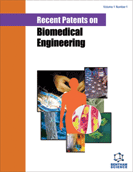Abstract
The concepts of arterialization of the coronary venous system and retrograde coronary sinus (CS) perfusion in clinical and experimental studies have inspired novel devices aiming for myocardial preservation and function improvement, especially in ischemic hearts. Based on these concepts, several patented devices using the CS have been developed to improve cardiac function in patients with heart disease. There are three main types of CS perfusion devices: the arterial- CS (A-CS) shunt, left ventricle-CS (LV-CS) shunt, and pressure-controlled CS occlusion device. In addition, catheters are used for drug delivery into the CS. Most of these devices are implanted percutaneously or by means of minimally invasive surgery. By avoiding the need for cardiopulmonary bypass, these devices offer a competitive treatment option for heart disease. This article reviews some CS devices in terms of methods of use and therapeutic concepts.
Keywords: Arterialization of the coronary sinus, Left ventricle-coronary sinus shunt, Transvenous myocardial perfusion, Coronary sinus occlusion, coronary sinus, shunt, left ventricle-CS, cardiopulmonary, Heart failure (HF), biventricular pacing, right atrium, percutaneous transluminal coronary angioplasty, CS ostium, edema, arteriosclerosis, antiarrhythmics, thrombolytics, gelatin hydrogels microspheres, cardiomegaly
 5
5

